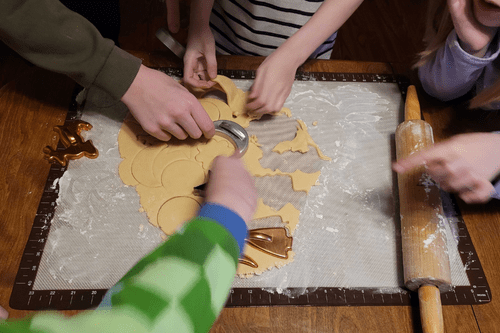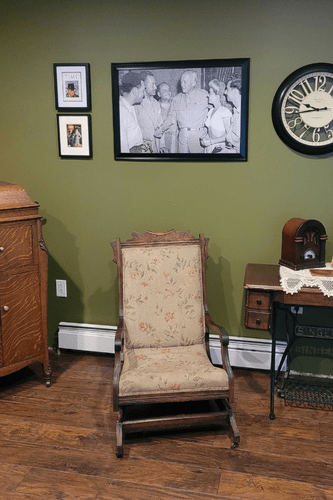
“You can do anything, but not everything.” -David Allen
Expectations are always lurking. They are fleeting, ever changing, and often impossible to meet. There is no checklist, or how-to manual on how to successfully manage expectations from our family, workplace, community, schools, friends, volunteer commitments, and most importantly ourselves. Meeting expectations is like trying to capture where the beach ends and the ocean begins. Just as the waves overlap and ebb and flow and shift the sand, so do expectations.
All my life I have struggled with perfectionism and pleasing people. However, with the wisdom of time, I can more clearly see that pleasing people is not the real struggle. The biggest problem is me and the expectations I put on myself, not the expectations others put on me.
Ways to Simplify Expectations
You can simplify your expectations by asking several questions. The first question is: “What is important to me and my family?” For each of you, the answer will be different and that answer will change depending on the season in your life. If you adjust your expectations to those priorities, you can follow your values.

Another question is “What are my top three priorities today (or this week, month, or year)?” It is easy to make to-do lists but all of those to-dos may not be a priority today or even this week. By prioritizing your expectations, you can look at life through a more realistic lens.
Asking these questions can help form realistic and practical expectations in a world where social media casts a picture perfect lens that is impossible to meet.
For example, for holidays or celebrations, we put on ourselves that we have to do it all. We feel we need to have gifts that are above others’ expectations, and then wrap those gifts beautifully. We think we need to go above and beyond, attend every event, and plan an Instagram worthy setup. We should prepare beautiful dishes from scratch, create homemade photo worthy desserts, have a clean house, and effortlessly manage a packed calendar. Instead, if we plan celebrations and fill our calendars through the lens of “what is important to me and my family” and “what are my top three priorities,” it is easier to align our expectations with reality.
Manage Expectations

You can learn to manage expectations you put on yourself by asking “Why do I feel this as an expectation?” Is it an expectation you put on yourself, is it an expectation put on you by others, or is it merely a perceived expectation by others? By viewing your choices, purchases, hobbies, home decor, volunteering, calendar, and more through that lens, you can make choices through a much clearer picture.
When learning to knit and crochet several years ago, I envisioned creating hats, socks, and vintage sweaters but never moved past simple stitches and very basic creations. My initial expectation of this craft did not line up with my time, energy, or passion to delve into more intricate designs. My actual experience is that in this season of life, I enjoy creating more simple projects. It brings me joy and is relaxing to knit and crochet washcloths, scarves, and blankets as gifts, so I let go of those first expectations I had put on myself. I gave away some of the yarns and extra supplies that were for those larger more complex projects, which made room for the season that I was in.
Let Go of Expectations
I have been working on saying “No” and “Not now” more often. In saying these words, you can release the expectations you perceive others have for you. Because most often, it truly is only your perception. You can fall into the trap of thinking you need to do it all. However, simplifying and making room for what is really important in your life is life changing.
Everything around you sends a silent message, and that silent to-do list can quickly add up, from piles of laundry, papers to be sorted, exercise equipment you don’t use, and more. The silent to-do list is a concept that minimalist Fumio Sasaki wrote about in his book “Goodbye, Things.”
“Things don’t just sit there. They send us silent messages. And the more the item has been neglected, the stronger its message will be.”
“When you say goodbye to all your unnecessary things, you also say goodbye to the process of comparing yourself with other people.”
“The objective isn’t to reduce, it’s to eliminate distractions so they can focus on the things that are truly important.”
― Fumio Sasaki, Goodbye, Things: The New Japanese Minimalism
So let go! Say no to things that do not fit into your current situation. Say “not now” to opportunities that come up that you are interested in but don’t have time for. Say “yes” to only those things that help you focus on what is truly important. Time is finite. Each moment slips by quickly, and the ticking of the clock reminds us of the passing of time. You can apply this not only to your calendar but also to the items in your life.

Do you not enjoy a craft or sport or cooking method any longer, after continually trying? Then pass the items on to someone who can use them! Cooking is not my favorite thing to do, so I used to collect cookbooks that I thought would inspire me. Every time I opened the cupboard, that nagging voice was there, reminding me how I wasted money on these books, comparing myself to other people who like to cook, and carrying the weight of something I was failing at. Time is limited however, and there are so many hobbies and passions, so it is ok if cooking is not one of mine. Once I accepted this season in my life, I cleared out the books I don’t use and made room for the cookbooks that I actually do use! And that nagging voice lessened.
As you work through your expectations, you can better understand why you do things, who you do them for, and what season of life you are in. You can confidently say “no” and “not now” to all the possibilities out there that do not align with your time and priorities. In doing so, you then can say “yes” to the things that align with your time and priorities, which allows you to make a difference in your home, community, and the world.


ABOUT ELIZABETH
Elizabeth Fought has been married for sixteen years to her husband, who is a soldier in the Ohio Army National Guard. They love being a military family and have four children, from ages fourteen to seven. She loves volunteering, reading, learning, and history, and is especially inspired by the resiliency of those on the WWII Home Front. She is grateful for the many wonderful resources and organizations that support the military and veteran communities!
